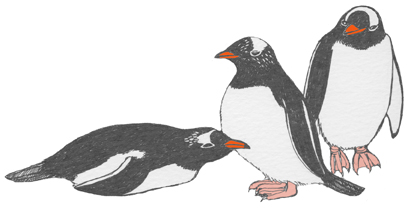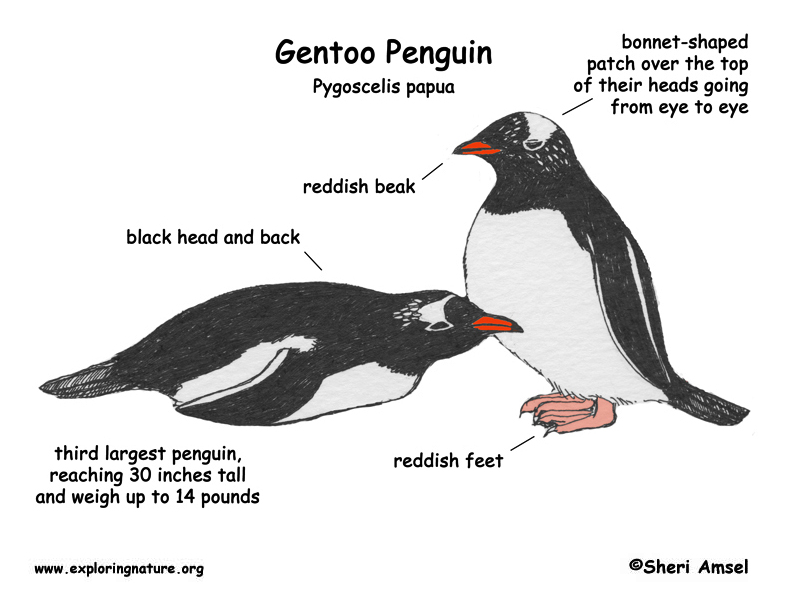

They are found around the Antarctic Circle and in the oceans around it.
They live on the coastlines and inland on Antarctica and the nearby islands.
They have a black head and back with a white bonnet-shaped patch over the top of their heads going from eye to eye. They have reddish beaks and feet. They can reach 30 inches tall and weigh up to 14 pounds. They are the third largest penguin, after the emperor and king penguins.
They don’t travel far, like other penguins, but live all year near their nesting colony. They can live 15-20 years. They can dive deeply for food.
They eat mostly krill, but also take squid, fish and other small ocean creatures.
They nest on beaches, cliffs and hillsides that are free of ice. They build a nest of stones and line it with feathers and plants. Males and females take turns warming (incubating) eggs. They will choose the same mate year after year.
Related Resources and Activites:
Download Hi-Res Color Diagram
Penguin (Gentoo) Coloring Page
Kingdom: Animalia
Phylum: Chordata
Subphylum: Vetebrata
Class: Aves
Order: Sphenisciformes
Family: Spheniscidae
Genus: Pygoscelis
Species: P. papua
When you research information you must cite the reference. Citing for websites is different from citing from books, magazines and periodicals. The style of citing shown here is from the MLA Style Citations (Modern Language Association).
When citing a WEBSITE the general format is as follows.
Author Last Name, First Name(s). "Title: Subtitle of Part of Web Page, if appropriate." Title: Subtitle: Section of Page if appropriate. Sponsoring/Publishing Agency, If Given. Additional significant descriptive information. Date of Electronic Publication or other Date, such as Last Updated. Day Month Year of access < URL >.
Amsel, Sheri. "Penguin (Gentoo)" Exploring Nature Educational Resource ©2005-2024. December 13, 2024
< http://www.exploringnature.org/db/view/95 >

